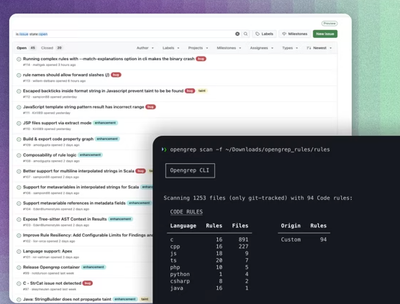Create LlamaIndex App
The easiest way to get started with LlamaIndex is by using create-llama. This CLI tool enables you to quickly start building a new LlamaIndex application, with everything set up for you.
Just run
npx create-llama@latest
to get started, or see below for more options. Once your app is generated, run
npm run dev
to start the development server. You can then visit http://localhost:3000 to see your app.
What you'll get
- A Next.js-powered front-end. The app is set up as a chat interface that can answer questions about your data (see below)
- You can style it with HTML and CSS, or you can optionally use components from shadcn/ui
- Your choice of 3 back-ends:
- Next.js: if you select this option, you’ll have a full stack Next.js application that you can deploy to a host like Vercel in just a few clicks. This uses LlamaIndex.TS, our TypeScript library.
- Express: if you want a more traditional Node.js application you can generate an Express backend. This also uses LlamaIndex.TS.
- Python FastAPI: if you select this option you’ll get a backend powered by the llama-index python package, which you can deploy to a service like Render or fly.io.
- The back-end has a single endpoint that allows you to send the state of your chat and receive additional responses
- You can choose whether you want a streaming or non-streaming back-end (if you're not sure, we recommend streaming)
- You can choose whether you want to use
ContextChatEngine or SimpleChatEngine
SimpleChatEngine will just talk to the LLM directly without using your dataContextChatEngine will use your data to answer questions (see below).
- The app uses OpenAI by default, so you'll need an OpenAI API key, or you can customize it to use any of the dozens of LLMs we support.
Using your data
If you've enabled ContextChatEngine, you can supply your own data and the app will index it and answer questions. Your generated app will have a folder called data:
- With the Next.js backend this is
./data - With the Express or Python backend this is in
./backend/data
The app will ingest any supported files you put in this directory. Your Next.js and Express apps use LlamaIndex.TS so they will be able to ingest any PDF, text, CSV, Markdown, Word and HTML files. The Python backend can read even more types, including video and audio files.
Before you can use your data, you need to index it. If you're using the Next.js or Express apps, run:
npm run generate
Then re-start your app. Remember you'll need to re-run generate if you add new files to your data folder. If you're using the Python backend, you can trigger indexing of your data by deleting the ./storage folder and re-starting the app.
Don't want a front-end?
It's optional! If you've selected the Python or Express back-ends, just delete the frontend folder and you'll get an API without any front-end code.
Customizing the LLM
By default the app will use OpenAI's gpt-3.5-turbo model. If you want to use GPT-4, you can modify this by editing a file:
- In the Next.js backend, edit
./app/api/chat/route.ts and replace gpt-3.5-turbo with gpt-4 - In the Express backend, edit
./backend/src/controllers/chat.controller.ts and likewise replace gpt-3.5-turbo with gpt-4 - In the Python backend, edit
./backend/app/utils/index.py and once again replace gpt-3.5-turbo with gpt-4
You can also replace OpenAI with one of our dozens of other supported LLMs.
Example
The simplest thing to do is run create-llama in interactive mode:
npx create-llama@latest
npm create llama@latest
yarn create llama
pnpm create llama@latest
You will be asked for the name of your project, along with other configuration options, something like this:
>> npm create llama@latest
Need to install the following packages:
create-llama@latest
Ok to proceed? (y) y
✔ What is your project named? … my-app
✔ Which template would you like to use? › Chat with streaming
✔ Which framework would you like to use? › NextJS
✔ Which UI would you like to use? › Just HTML
✔ Which chat engine would you like to use? › ContextChatEngine
✔ Please provide your OpenAI API key (leave blank to skip): …
✔ Would you like to use ESLint? … No / Yes
Creating a new LlamaIndex app in /home/my-app.
Running non-interactively
You can also pass command line arguments to set up a new project
non-interactively. See create-llama --help:
create-llama <project-directory> [options]
Options:
-V, --version output the version number
--use-npm
Explicitly tell the CLI to bootstrap the app using npm
--use-pnpm
Explicitly tell the CLI to bootstrap the app using pnpm
--use-yarn
Explicitly tell the CLI to bootstrap the app using Yarn
LlamaIndex Documentation
Inspired by and adapted from create-next-app



